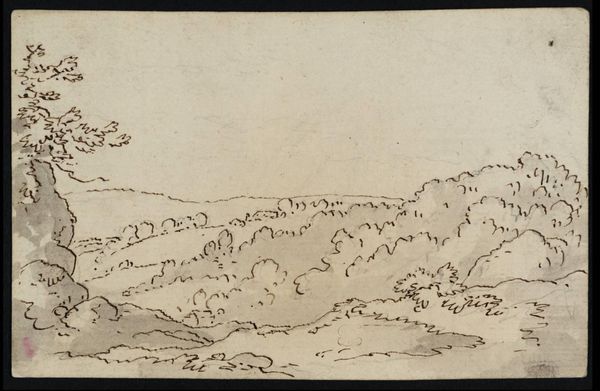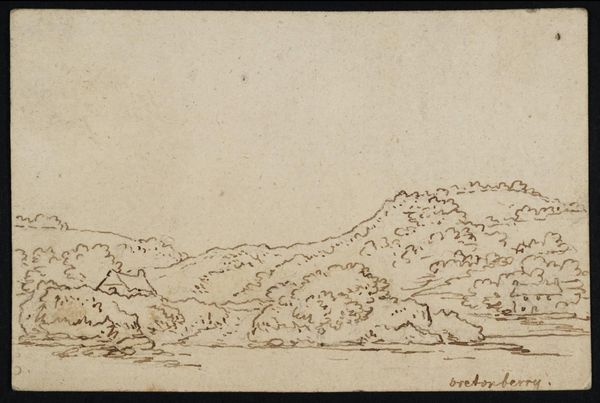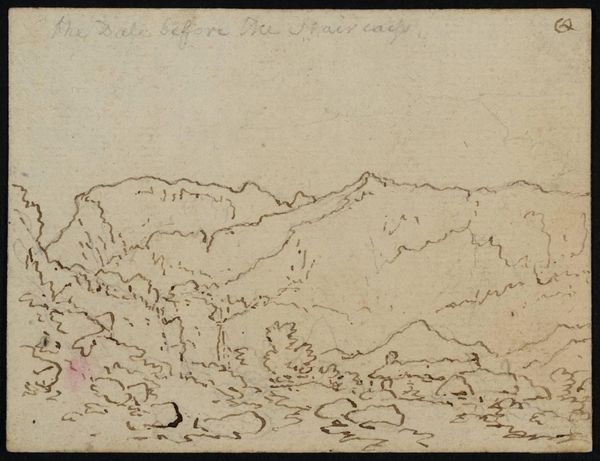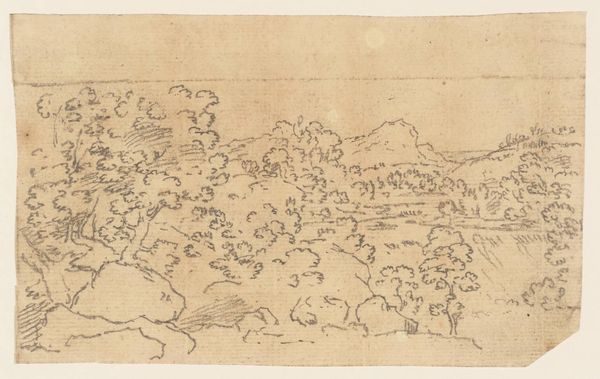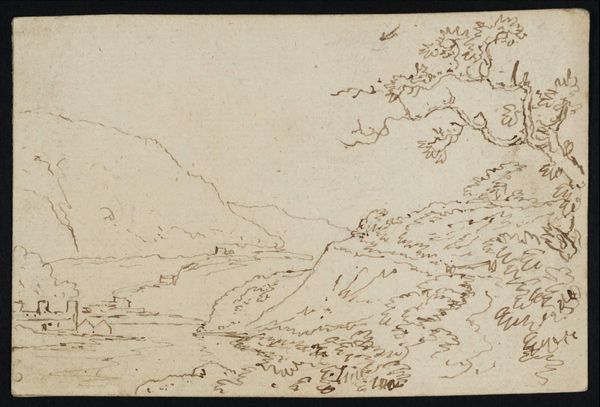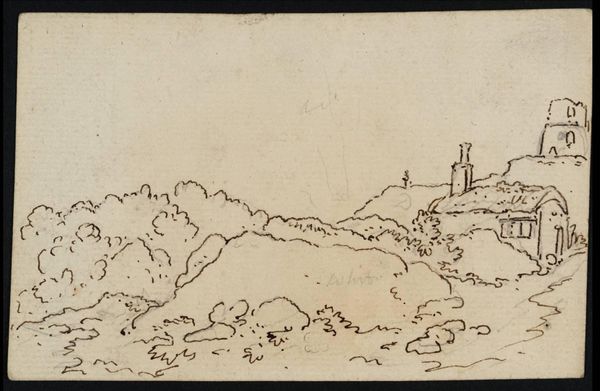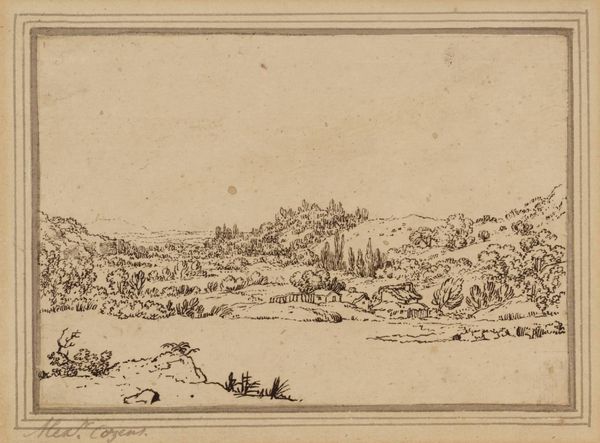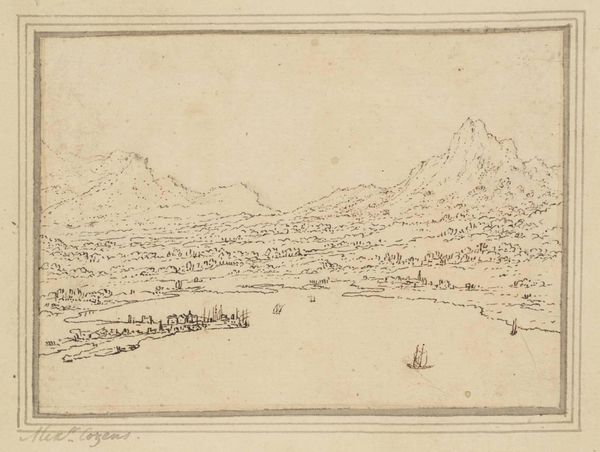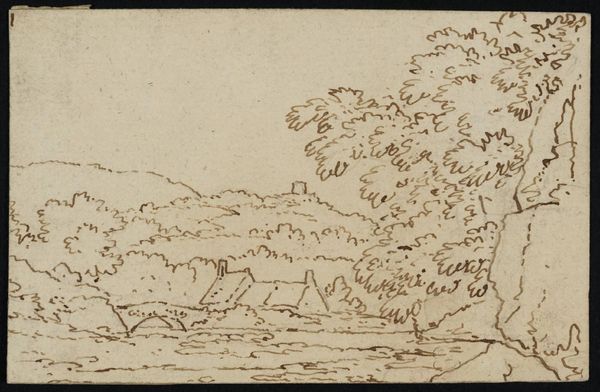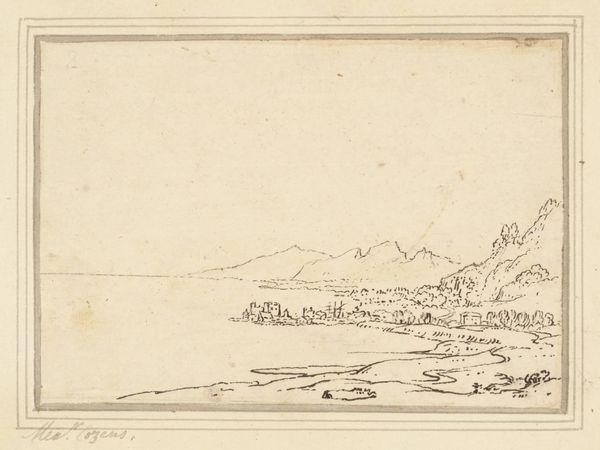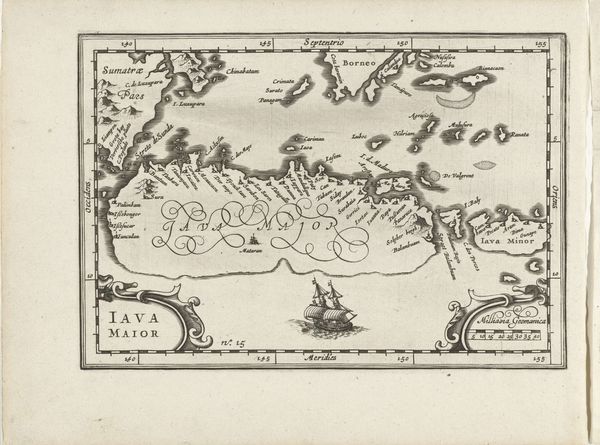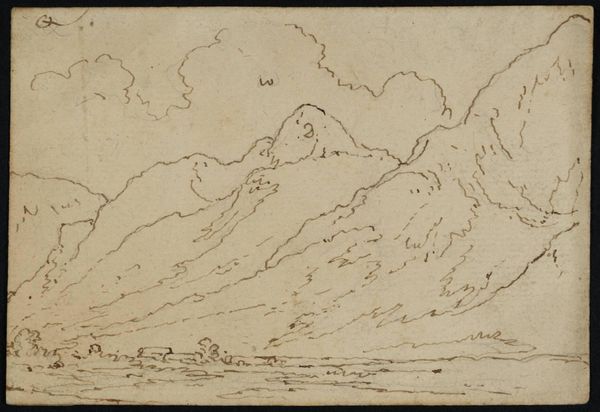
Part of the Avon Gorge at Clifton, with a Kiln on the Cliff Edge c. 1786 - 1800
0:00
0:00
Dimensions: support: 80 x 124 mm
Copyright: CC-BY-NC-ND 4.0 DEED, Photo: Tate
Curator: Here we have Philip James De Loutherbourg's "Part of the Avon Gorge at Clifton, with a Kiln on the Cliff Edge," part of the Tate Collections. Editor: It's quite understated. The monochrome ink wash gives it a somewhat bleak, industrial feel, doesn't it? Curator: Yes, it captures a moment in the industrial reshaping of the British landscape. The kiln isn't just a detail; it's a symbol of emerging industries encroaching on the natural world. Editor: Absolutely. And consider the material process: ink wash on paper, a relatively inexpensive method, hinting perhaps at the democratization of landscape art and its accessibility to a wider audience. The labour needed to manage that kiln would have been considerable, its product contributing to the expanding economy. Curator: Precisely. De Loutherbourg, though known for his theatrical effects, presents a rather unromantic view here, almost a document of economic change. Editor: It's a fascinating snapshot of the changing relationship between people, production, and the environment. Curator: Indeed, a reminder that even seemingly bucolic scenes often bear the marks of industry. Editor: A poignant study in shifting landscapes, both natural and economic.
